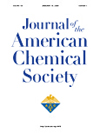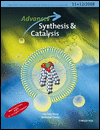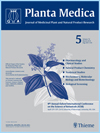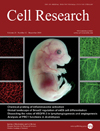John A. Porco Jr., Prof. Dr. , Shun Su, Xiaoguang Lei, Sujata Bardhan, Scott D. Rychnovsky, Prof. Dr.
Angew. Chem. Int. Ed . 2006 , 45 , 5790-5792; Angew. Chem . 2006 , 118 , 5922-5924. (News stories describing this work were reported in Chem. & Eng. News 2006 , 31 , 11 and Nature 2006 , 442 , 492-493)
Xiaoguang Lei and John A. Porco, Jr.
J. Am. Chem. Soc. 2006 , 128 , 14790-14791( News story describing this work was highlighted in Chem. & Eng. News 2006 , 45 , 9. )
The enantioselective total synthesis of the diazobenzofluorene antibiotic (-)-kinamycin C is reported. The approach involves tartrate-mediated, asymmetric nucleophilic epoxidation of a functionalized quinone monoketal to construct the highly substituted D-ring.
Peng, L. F.; Kim, S. S.; Matchacheep, S.; Lei, X .; Su, S.; Lin, W.; Runguphan, W.; Choe, W. H.; Sakamoto, N.; Beeler, A. B.; Porco, J. A., Jr.; Schreiber, S. L.; Chung, R. T.
Antimicrob. Agents Chemother . 2007 , 51 , 3756-3759
Using our high-throughput hepatitis C replicon assay to screen a library of over 8,000 novel diversity-oriented synthesis (DOS) compounds, we identified several novel compounds that regulate hepatitis C virus (HCV) replication, including two libraries of epoxides that inhibit HCV replication (best 50% effective concentration, < 0.5 μM). We then synthesized an analog of these compounds […]
Fay Ng, Heedong Yun, Xiaoguang Lei, Samuel J. Danishefsky, Jed Fahey, Katherine Stephenson, Charles Flexner, Lawrence Lee
Tetrahedron Lett. 2008 , 49 , 7178-7179
Panaxytriol is a nutraceutical-based active constituent of Korean red ginseng and is reported to exhibit potent anti-tumor properties. Its activity may be in part due to its induction of phase 2 chemoprotective enzymes. Its unique properties may have important implications in cancer therapeutics.
Xiaoguang Lei, Mingji Dai, Zihao Hua, Samuel J. Danishefsky
Tetrahedron Lett. 2008 , 49 , 6383-6385
The Letter describes a short and biomimetic synthesis of tricycloillicinone, which was found to enhance the action of choline acetyltransferase (ChAT). The synthetic route has two critical reactions: bulky, oxygenophilic methylaluminum bis(4-bromo-2,6-di-tert-butylphenoxide) (MABR) promoted rearrangement of prenyl phenyl ether and photochemical cyclization. Furthermore, experiments were designed to explore the process of MABR-promoted rearrangement. It was found that the stereochemistry of deuterium labeled prenyl group was only partially scrambled, which suggests that there may be two possible reaction pathways involved in this process. It also suggests that the direct migration of prenyl group to para-position under these conditions is slightly favored over the Claisen-Cope process. The highly efficient synthetic route also provides important new opportunities to explore the biological behavior of tricycloillicinone. ? 2008 Elsevier Ltd. All rights reserved.
Xiaoguang Lei, Samuel J. Danishefsky
Adv. Synth. Catal. 2008 , 350, 1677-1681
The highly efficient synthesis of a novel heat shock protein 90 (Hsp90)-based anticancer agent, triazole-cycloproparadicicol, is described. The key step involves a fragment coupling using ‘click chemistry’ The preliminary biological evaluation of triazole-cycloproparadicicol is also reported.
Phase 2 detoxification enzymes protect against carcinogenesis and oxidative stress. Ginseng ( PANAX spp.) extracts and components were assayed for inducer activity of NQO1 (quinone reductase), a phase 2 enzyme, in Hepa1c1c7 cells. Ginseng extracts were analyzed for ginsenosides and panaxytriol. Korean red PANAX GINSENG extracts demonstrated the most potent phase 2 enzyme induction activity (76,900 U/g dried rhizome powder and 27,800 U/g for two similar preparations). The ginsenoside-enriched HT-1001 American ginseng ( PANAX QUINQUEFOLIUS) extract was the next most potent inducer, with activity of 15,900 U/g, followed by raw American ginseng root with activity of 8700 U/g. Neither a polysaccharide-enriched extract of American ginseng nor a commercial white PANAX GINSENG preparation showed any inducer activity. Pure ginsenosides showed no inducer activity. Protopanaxadiol and protopanaxatriol, deglycosylated ginsenoside metabolic derivatives, showed potent induction activity (approximately 500,000 U/g each). Synthetic panaxytriol was over 10-fold more potent (induction potency 5,760,000 U/g). There was no correlation between ginsenoside content and phase 2 enzyme induction. The most potent inducing red ginseng extract also had the highest panaxytriol content, 120.8 microg/g. We found that ginseng induced NQO1 and that polyacetylenes are the most active components.
Zhifu Han, Tianhui Niu, Junbiao Chang, Xiaoguang Lei , Mingyan Zhao, Qiang Wang , Wei Cheng , Jinjing Wang , Yi Feng & Jijie Chai
Nature 2010, 464, 1205-1209
Recent studies1, 2, 3, 4, 5 have unequivocally associated the fat mass and obesity-associated (FTO) gene with the risk of obesity. In vitro FTO protein is an AlkB-like DNA/RNA demethylase with a strong preference for 3-methylthymidine (3-meT) in single-stranded DNA or 3-methyluracil (3-meU) in single-stranded RNA6, 7, 8. Here we report the crystal structure of FTO in complex with the mononucleotide 3-meT. FTO comprises an amino-terminal AlkB-like domain and a carboxy-terminal domain with a novel fold. Biochemical assays show that these two domains interact with each other, which is required for FTO catalytic activity. In contrast with the structures of other AlkB members, FTO possesses an extra loop covering one side of the conserved jelly-roll motif. Structural comparison shows that this loop selectively competes with the unmethylated strand of the DNA duplex for binding to FTO, suggesting that it has an important role in FTO selection against double-stranded nucleic acids. The ability of FTO to distinguish 3-meT or 3-meU from other nucleotides is conferred by its hydrogen-bonding interaction with the two carbonyl oxygen atoms in 3-meT or 3-meU. Taken together, these results provide a structural basis for understanding
Chao Li, Xueliang Yu and Xiaoguang Lei*
Org. Lett. 2010, 12, 4284-4287
A protecting group free and biomimetic total synthesis of (+)-ainsliadimer A has been accomplished in 14 steps from α-santonin. The synthesis relies on a hydrogen bonding promoted [4 + 2]-hetero-Diels?Alder dimerization to afford the key homodimer intermediate, which demonstrates the feasibility of using nonenzymatic conditions to achieve the proposed biosynthesis.
Caspase-1-mediated IL-1β production is generally controlled by two pathways. Toll-like receptors (TLRs) recognize pathogen-derived products and induce NF-κB-dependent pro-IL-1β transcription; NOD-like receptors (NLRs) assemble caspase-1-activating inflammasome complexes that sense bacterial products/danger signals. Through a targeted chemical screen, we identify bromoxone, a marine natural product, as a specific and potent inhibitor of the caspase-1 pathway. Bromoxone […]
-

-

-

-

-

-

-

-
-

-

Total Synthesis and Structure Assignment of (+)-Hexacyclinol
John A. Porco Jr., Prof. Dr. , Shun Su, Xiaoguang Lei, Sujata Bardhan, Scott D. Rychnovsky, Prof. Dr.
Angew. Chem. Int. Ed . 2006 , 45 , 5790-5792; Angew. Chem . 2006 , 118 , 5922-5924. (News stories describing this work were reported in Chem. & Eng. News 2006 , 31 , 11 and Nature 2006 , 442 , 492-493)
View Full Article
Total Synthesis of the Diazobenzofluorene Antibiotic (-)-Kinamycin C1
Xiaoguang Lei and John A. Porco, Jr.
J. Am. Chem. Soc. 2006 , 128 , 14790-14791( News story describing this work was highlighted in Chem. & Eng. News 2006 , 45 , 9. )
The enantioselective total synthesis of the diazobenzofluorene antibiotic (-)-kinamycin C is reported. The approach involves tartrate-mediated, asymmetric nucleophilic epoxidation of a functionalized quinone monoketal to construct the highly substituted D-ring.
Identification of Novel Epoxide Inhibitors of HCV Replication Using High-Throughput Screening
Peng, L. F.; Kim, S. S.; Matchacheep, S.; Lei, X .; Su, S.; Lin, W.; Runguphan, W.; Choe, W. H.; Sakamoto, N.; Beeler, A. B.; Porco, J. A., Jr.; Schreiber, S. L.; Chung, R. T.
Antimicrob. Agents Chemother . 2007 , 51 , 3756-3759
Using our high-throughput hepatitis C replicon assay to screen a library of over 8,000 novel diversity-oriented synthesis (DOS) compounds, we identified several novel compounds that regulate hepatitis C virus (HCV) replication, including two libraries of epoxides that inhibit HCV replication (best 50% effective concentration, < 0.5 μM). We then synthesized an analog of these compounds […]
(3 R ,9 R ,10 R )-Panaxytriol: a molecular-based nutraceutical with possible application to cancer prevention and treatment
Fay Ng, Heedong Yun, Xiaoguang Lei, Samuel J. Danishefsky, Jed Fahey, Katherine Stephenson, Charles Flexner, Lawrence Lee
Tetrahedron Lett. 2008 , 49 , 7178-7179
Panaxytriol is a nutraceutical-based active constituent of Korean red ginseng and is reported to exhibit potent anti-tumor properties. Its activity may be in part due to its induction of phase 2 chemoprotective enzymes. Its unique properties may have important implications in cancer therapeutics.
Biomimetic total synthesis of tricycloillicinone and mechanistic studies toward the rearrangement of prenyl phenyl ethers
Xiaoguang Lei, Mingji Dai, Zihao Hua, Samuel J. Danishefsky
Tetrahedron Lett. 2008 , 49 , 6383-6385
The Letter describes a short and biomimetic synthesis of tricycloillicinone, which was found to enhance the action of choline acetyltransferase (ChAT). The synthetic route has two critical reactions: bulky, oxygenophilic methylaluminum bis(4-bromo-2,6-di-tert-butylphenoxide) (MABR) promoted rearrangement of prenyl phenyl ether and photochemical cyclization. Furthermore, experiments were designed to explore the process of MABR-promoted rearrangement. It was found that the stereochemistry of deuterium labeled prenyl group was only partially scrambled, which suggests that there may be two possible reaction pathways involved in this process. It also suggests that the direct migration of prenyl group to para-position under these conditions is slightly favored over the Claisen-Cope process. The highly efficient synthetic route also provides important new opportunities to explore the biological behavior of tricycloillicinone. ? 2008 Elsevier Ltd. All rights reserved.
Efficient Synthesis of a Novel Resorcyclide as Anticancer Agent Based on Hsp90 inhibition
Xiaoguang Lei, Samuel J. Danishefsky
Adv. Synth. Catal. 2008 , 350, 1677-1681
The highly efficient synthesis of a novel heat shock protein 90 (Hsp90)-based anticancer agent, triazole-cycloproparadicicol, is described. The key step involves a fragment coupling using ‘click chemistry’ The preliminary biological evaluation of triazole-cycloproparadicicol is also reported.
Induction of Chemoprotective Phase 2 Enzymes by Ginseng and its Components
Lee, Lawrence S.; Stephenson, Katherine K.; Fahey, Jed W.; Parsons, Teresa L.; Lietman, Paul S.; Andrade, Adriana S.; Lei, Xiaoguang; Yun, Heedong; Soon, Gaik H.; Shen, Ping; Danishefsky, Samuel; Flexner, Charles
Planta Med. 2009 , 75 , 1129-1133
Phase 2 detoxification enzymes protect against carcinogenesis and oxidative stress. Ginseng ( PANAX spp.) extracts and components were assayed for inducer activity of NQO1 (quinone reductase), a phase 2 enzyme, in Hepa1c1c7 cells. Ginseng extracts were analyzed for ginsenosides and panaxytriol. Korean red PANAX GINSENG extracts demonstrated the most potent phase 2 enzyme induction activity (76,900 U/g dried rhizome powder and 27,800 U/g for two similar preparations). The ginsenoside-enriched HT-1001 American ginseng ( PANAX QUINQUEFOLIUS) extract was the next most potent inducer, with activity of 15,900 U/g, followed by raw American ginseng root with activity of 8700 U/g. Neither a polysaccharide-enriched extract of American ginseng nor a commercial white PANAX GINSENG preparation showed any inducer activity. Pure ginsenosides showed no inducer activity. Protopanaxadiol and protopanaxatriol, deglycosylated ginsenoside metabolic derivatives, showed potent induction activity (approximately 500,000 U/g each). Synthetic panaxytriol was over 10-fold more potent (induction potency 5,760,000 U/g). There was no correlation between ginsenoside content and phase 2 enzyme induction. The most potent inducing red ginseng extract also had the highest panaxytriol content, 120.8 microg/g. We found that ginseng induced NQO1 and that polyacetylenes are the most active components.
Crystal structure of the FTO protein reveals basis for its substrate specificity
Zhifu Han, Tianhui Niu, Junbiao Chang, Xiaoguang Lei , Mingyan Zhao, Qiang Wang , Wei Cheng , Jinjing Wang , Yi Feng & Jijie Chai
Nature 2010, 464, 1205-1209
Recent studies1, 2, 3, 4, 5 have unequivocally associated the fat mass and obesity-associated (FTO) gene with the risk of obesity. In vitro FTO protein is an AlkB-like DNA/RNA demethylase with a strong preference for 3-methylthymidine (3-meT) in single-stranded DNA or 3-methyluracil (3-meU) in single-stranded RNA6, 7, 8. Here we report the crystal structure of FTO in complex with the mononucleotide 3-meT. FTO comprises an amino-terminal AlkB-like domain and a carboxy-terminal domain with a novel fold. Biochemical assays show that these two domains interact with each other, which is required for FTO catalytic activity. In contrast with the structures of other AlkB members, FTO possesses an extra loop covering one side of the conserved jelly-roll motif. Structural comparison shows that this loop selectively competes with the unmethylated strand of the DNA duplex for binding to FTO, suggesting that it has an important role in FTO selection against double-stranded nucleic acids. The ability of FTO to distinguish 3-meT or 3-meU from other nucleotides is conferred by its hydrogen-bonding interaction with the two carbonyl oxygen atoms in 3-meT or 3-meU. Taken together, these results provide a structural basis for understanding
A Biomimetic Total Synthesis of (+)-Ainsliadimer A
Chao Li, Xueliang Yu and Xiaoguang Lei*
Org. Lett. 2010, 12, 4284-4287
A protecting group free and biomimetic total synthesis of (+)-ainsliadimer A has been accomplished in 14 steps from α-santonin. The synthesis relies on a hydrogen bonding promoted [4 + 2]-hetero-Diels?Alder dimerization to afford the key homodimer intermediate, which demonstrates the feasibility of using nonenzymatic conditions to achieve the proposed biosynthesis.
Chemical Probing reaveals insights into the signaling mechanism of inflammasome activation
Yi-Nan Gong, Xiaoming Wang, Jiayi Wang, Zhenxiao Yang, Shan Li, Jieling Yang, Liping Liu, Xiaoguang Lei* and Feng Sh
Cell. Res. 2010, 20, 1289-1305
Caspase-1-mediated IL-1β production is generally controlled by two pathways. Toll-like receptors (TLRs) recognize pathogen-derived products and induce NF-κB-dependent pro-IL-1β transcription; NOD-like receptors (NLRs) assemble caspase-1-activating inflammasome complexes that sense bacterial products/danger signals. Through a targeted chemical screen, we identify bromoxone, a marine natural product, as a specific and potent inhibitor of the caspase-1 pathway. Bromoxone […]